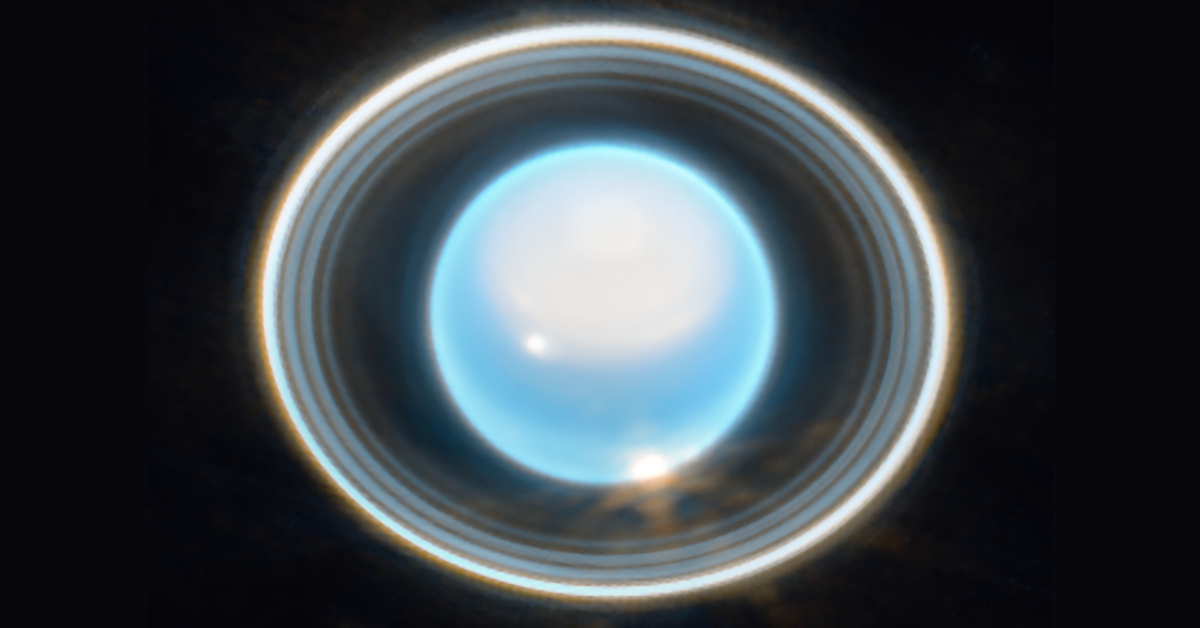The seventh planet from the Sun, as you’ve never seen it before.

A breathtaking picture of the ice giant Uranus has been captured by NASA‘s James Webb Space Telescope (JWST). The stunning image shows vivid rings and vibrant features in the planet’s atmosphere. The Webb telescope has showcased its remarkable sensitivity in detecting even the faintest dusty rings.
Uranus is labeled as an ice giant owing to the composition of its inner structure. A considerable portion of its mass is presumed to be a dense, scorching fluid of frozen substances such as water, methane, and ammonia, situated above a small rocky core.
The planet is unique in the Solar System in that its axis tilt is close to 90 degrees, which means that one of its poles is in the direction of the Sun for a significant part of its orbital period. This causes extreme seasons, as the poles are exposed to constant sunlight for many years and then plunged into total darkness for the same amount of time – the planet takes 84 years to orbit the Sun.
It is now late spring at the north pole of Uranus, visible here, and the northern summer is expected in 2028. When Voyager-2 flew past the planet in 1986, it was summer at the south pole, which is now covered in the complete darkness of outer space.

The bright area visible on the right side of the planet, on the pole facing the Sun, is a so-called polar cap, which is unique to Uranus: it appears when the pole is exposed to direct sunlight in summer and disappears in autumn. NASA hopes the new JWST data will help researchers understand this mysterious mechanism.
The space telescope’s super-sensitive NIRCam instrument has already revealed a surprising phenomenon of the polar cap: a fine, increased brightness can be seen in the center of the cap, which was not revealed by previous telescopic images (Hubble, Keck). At the edge of the cap, as well as at the left edge of the planet, a bright cloud can be seen, which probably indicates active storms.

Uranus has 13 known rings, 11 of which are visible in the JWST image. Webb senses some of them to be so bright that when they are close together, they appear to merge into one larger ring. In addition to the nine main rings, two fainter rings of dust (discovered during the 1986 flyby by Voyager 2) can also be detected in the image, and researchers hope that future Webb images will also reveal the two faint outer rings discovered by Hubble during the 2007 ring-plane crossing.
The current observation of this enigmatic planet is merely a glimpse of Webb’s capabilities. In 2022, Uranus science was identified as a priority in the 2023-2033 Planetary Science and Astrobiology decadal survey by the National Academies of Sciences, Engineering, and Medicine. Further examinations of Uranus are presently underway, with additional ones scheduled for Webb’s first year of scientific operations.
